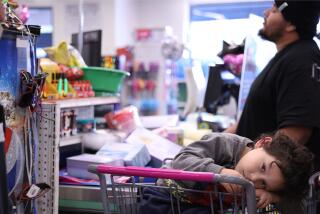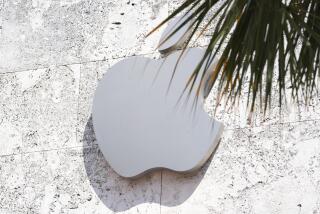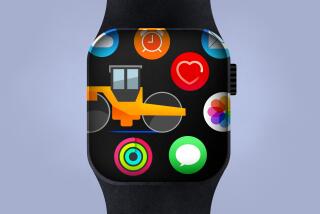How the Apple store has fallen from grace
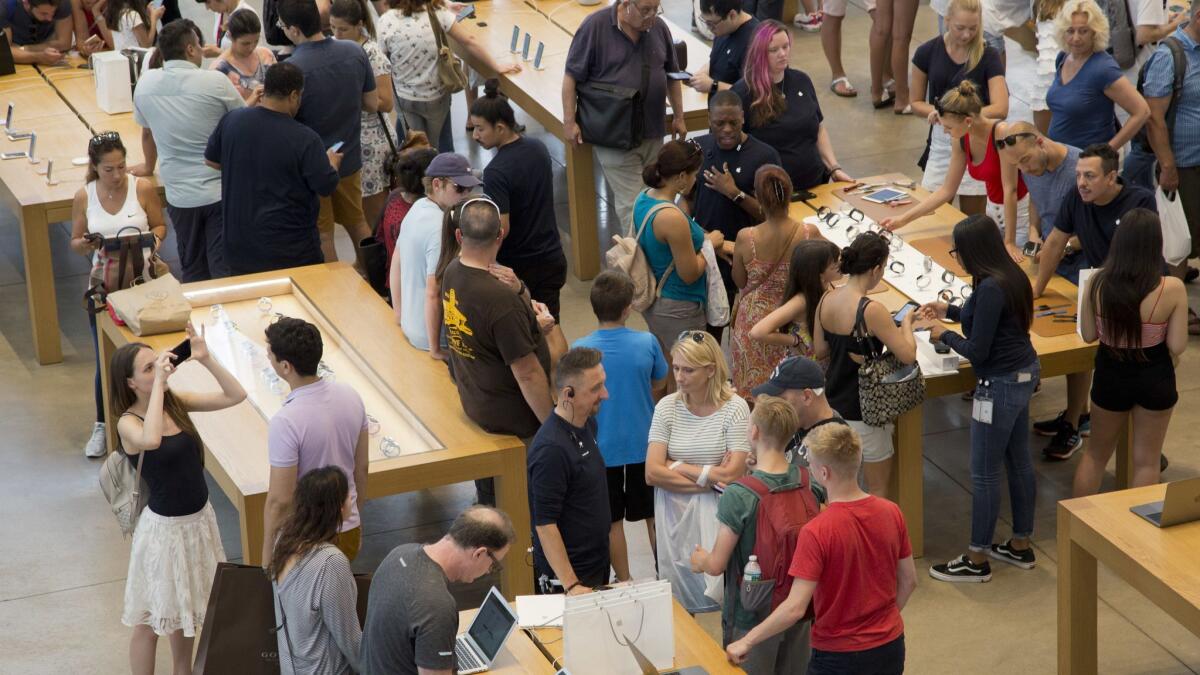
Web Smith’s recent experience at his local Apple store in the suburbs of Columbus, Ohio, has been an exercise in frustration.
There was the time he visited the Easton Town Center location to buy a laptop for his 11-year-old daughter and spent almost 20 minutes getting an employee to accept his credit card. In January, Smith was buying a monitor and kept asking store workers to check him out, but they couldn’t because they were Apple “Geniuses” handling tech support and not sales.
“It took me forever to get someone to sell me the product,” said Smith, who runs 2PM Inc., an e-commerce research and consulting firm. “It’s become harder to buy something, even when the place isn’t busy. Buying a product there used to be a revered thing. Now you don’t want to bother with the inconvenience.”
Smith’s sentiment is shared by legions of Apple customers who vent on social media, on customer forums and in conversations with reporters. Only a few years ago, the raves easily outpaced the pans.
In interviews, current and former Apple employees blame a combination of factors. They say the stores have become mostly an exercise in branding and no longer do a good job serving mission shoppers such as Smith. Meanwhile, they say, the quality of staff has slipped during an 18-year expansion in which Apple has opened more than 500 locations and hired 70,000 people. The Genius Bar, once renowned for its tech support, has been largely replaced with staffers who roam the stores and are harder to track down. That’s a significant drawback because people are hanging on to their phones longer these days and need them repaired.
In January, Apple Inc. stunned Wall Street, warning that revenue for the holiday quarter would come in well below forecasts, mostly owing to slowing sales of the iPhone. Although weakening demand for Apple’s most important product largely reflects a maturing smartphone market, the problems at the stores weren’t helping. Weeks later, Chief Executive Tim Cook announced that retail chief Angela Ahrendts was leaving and would be succeeded by veteran Apple executive Deirdre O’Brien.
O’Brien, 52, has plenty to work with — and her division remains an object of envy for the beleaguered retail industry. Last year, Apple stores and the accompanying website were responsible for a significant chunk of the $77 billion that the company got from direct distribution channels. As recently as 2017, the retail arm was generating an estimated $5,500 in sales per square foot, easily outpacing rivals. But that’s getting harder to pull off. When Apple reported earnings last month, executives acknowledged resorting to long-shunned retail tactics — such as discounts, cheap financing and generous trade-ins — to goose demand for the iPhone. That’s not a viable long-term strategy.
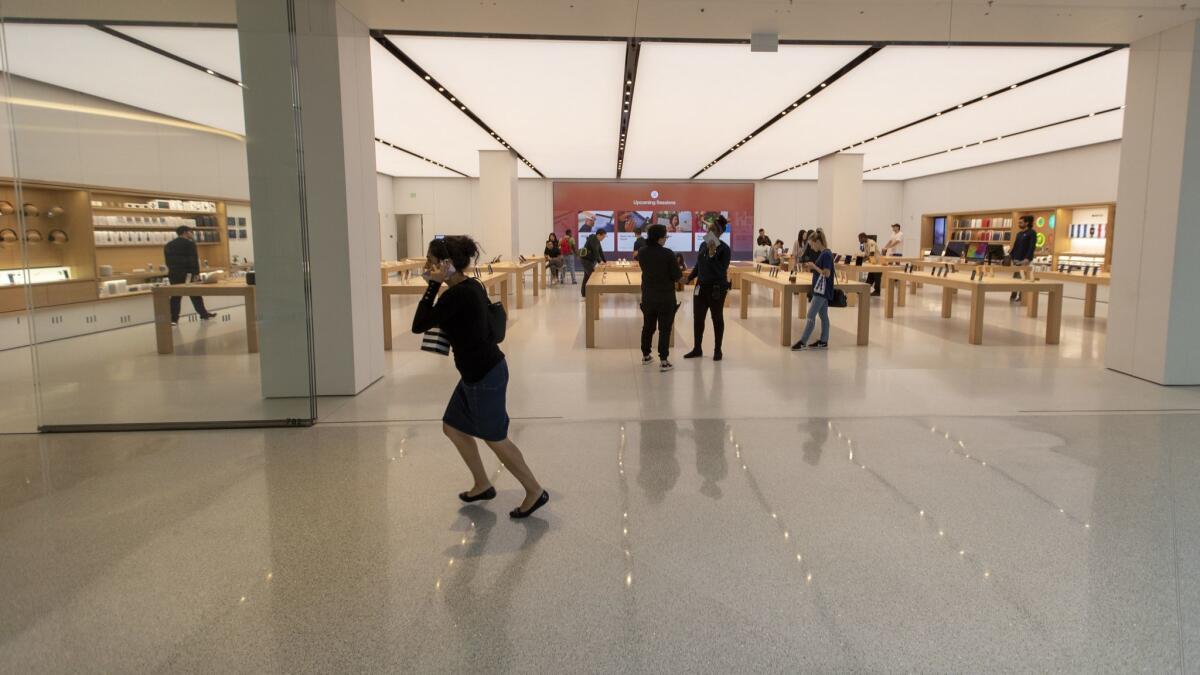
O’Brien’s immediate challenge is to make the stores more shopper-friendly, even if that means moving away from the tony gathering places her predecessor favored and creating more clearly defined spaces for browsing, quick purchases and service. As human-resources chief (a position she will hold concurrently), she is well situated to overhaul recruitment and training. That’s crucial because store associates will probably be deployed in the coming years to sell the array of services — including music subscriptions and extended warranties — that Apple is counting on to augment slowing iPhone sales.
An Apple spokesperson declined to comment and didn’t make O’Brien available for an interview. Ahrendts didn’t respond to requests for comment.
Skepticism greeted the 2001 opening of Apple’s first two stores, in Glendale and near Washington, D.C. Consumer gadget companies had tried similar experiments with mixed results, and the stampede online was already underway. But Apple pulled it off — transforming the retail experience with airy, minimalist stores and industry-disrupting innovations such as the Genius Bar. Before long, people were lining up for days to get their hands on the next iPhone or iPad, and kids were hanging out after school taking snapshots on the Mac Photo Booth app. Over the next few years, the Apple Store’s uncluttered look was emulated by Microsoft, Samsung, Tesla and others.
For a decade, Apple’s retail experiment flourished under Ron Johnson, a former Target executive whose efforts earned him a mostly deserved reputation as a retail pioneer. During his tenure, Johnson oversaw the opening of 350-plus stores and expansions into more than a dozen countries, including Japan, Australia, Italy, China and Canada. Then, in 2011, he left to reboot the department store chain J.C. Penney (where he struggled to replicate the Apple magic before being pushed out). Johnson didn’t return requests for comment.
He was replaced in early 2012 by John Browett, who had previously run the British electronics chain Dixons. Browett borrowed from the big-box playbook by pushing accessories and warranties. That boosted sales but weakened a culture that preferred to help customers rather than sell to them. In a morale-damaging effort to cut costs, he fired workers, cut the hours of others, reduced overtime and promoted fewer people. Browett didn’t even make it to the holiday shopping season; Cook fired him and ran the retail operation himself until Ahrendts started in May 2014.
The former Burberry chief’s hiring was widely applauded. At the time, Apple was positioning itself as a fashion brand; an executive who had made her name pushing $500 cashmere scarves and $3,000 trench coats now would be selling pricey Apple Watches. Under Ahrendts, the stores began to resemble jewelry emporiums, where a $17,000, special-edition Watch wouldn’t seem out of place. For the first time, salespeople recommended products and were encouraged to say things like, “I think the smaller one suits your wrist.”
One of her first moves was to turn the stores into “Town Squares,” where shoppers could hang out and, in industry parlance, “spend time with the brand.” Lines at the Genius Bar would have spoiled the effect, so stores started replacing the beloved customer-service counters with Genius Groves (comfortable seating under trees), tables and roaming Geniuses. Checkout counters also disappeared in favor of salespeople armed with mobile devices. The goal was to make Apple stores more like luxury showrooms, pushing offstage the unseemly business of checking out and fielding complaints.
Meanwhile, Ahrendts began moving sales and service onto the web — encouraging staff to tell customers to “get in line, online.” Customers were to make an appointment on Apple’s website and then pick up the product at a store. Apple was “trying to streamline things,” said one employee, “but in the process made things more difficult for some customers.”
Before Ahrendts’ arrival, the Apple Store excelled at three key tasks: selling products, helping customers troubleshoot their devices and teaching them how to get the most out of their gadgets. “Steve Jobs was really keen on stepping into the store and knowing what to do,” recalled a former Apple retail executive, who requested anonymity to speak freely. Mission shoppers who wanted to pick up a pair of headphones or an iPhone could get in and out quickly; those who wanted to learn more about their purchase could spend an hour getting trained by a Creative. If someone brought in a busted iPhone, a Genius would sort it out.
Over time, according to several current and former employees, Ahrendts upset that finely tuned balance. “You don’t feel like there is much engagement at the front of the store, there isn’t a push to people,” said the former executive. “The store should be a place where you see upgrades happening.”
The overhaul of the Genius Bar has been especially controversial. Customers looking for technical advice or repairs must now check in with an employee, who types their request into an iPad. Then when a Genius is available, he or she must find the customer wherever they happen to be in the store. Ahrendts was determined to get rid of lineups, but now the stores are often crowded with people waiting for their iPhones to be fixed or batteries swapped out.
The Genius service also lost the human touch. In the past, Geniuses could work on a Mac or iPhone right at the counter, chatting and explaining what they were doing. “The people doing the support now don’t have a lot of room to work,” this person said. “They often have to take your machine to a back room.”
Opinion is divided on the changes Ahrendts made to customer education. For many years, you could pay a $99 annual fee and schedule one-on-one training sessions with an Apple worker. Ahrendts replaced that with Today at Apple, free group sessions where customers can learn to drum on GarageBand, use an Apple Watch or enjoy a concert. The company said that few people signed up for the previous service but that 18,000 Today at Apple sessions are held each week. Employees say customers complain that the classes proceed only as quickly as the slowest learner and recommend bringing back the one-on-one sessions.
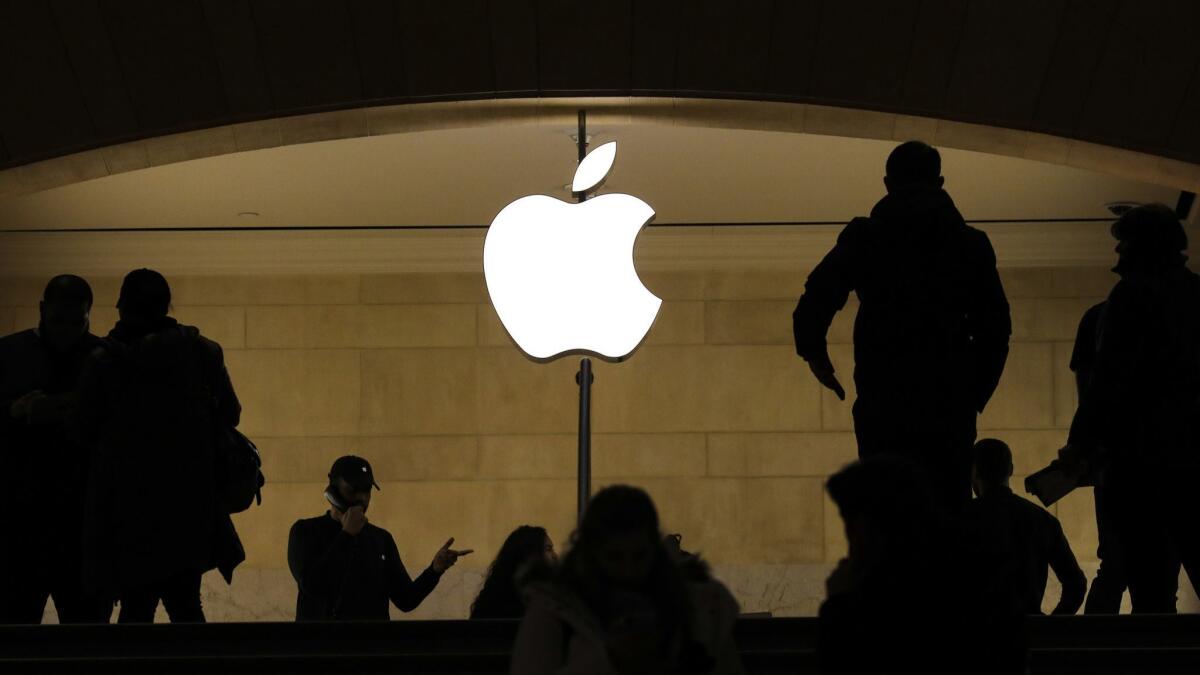
Ahrendts gets credit for accelerating the stores’ focus away from Macs and toward mobile devices — a necessary move since iPhones generate most of Apple’s revenue. Industry watchers applaud the accessories section, which features pullout drawers containing iPhone cases. The installation of giant video walls marketing products added wow factor.
Employees said not all the problems afflicting the stores can be blamed on Ahrendts. Some said her tenure got off to an undeservedly rough start with the launch of the Apple Watch. Apple’s first wearable device had been hyped for months, but because of production snafus, the stores didn’t have enough units for several months. Ahrendts (and store associates) took a lot of heat for that, the employees said.
Employees also said the deterioration in the quality of store staff didn’t start under Ahrendts but worsened during her tenure. “Employees used to be very skilled,” one said. “When you came to Apple, you could walk in and talk to someone who happens to be a musician or videographer on the side, really knowledgeable. They hire really nice people now, but they are much less technical.” During the Johnson era, sales associates got three weeks to a month of training; now they get about a week if they’re joining an existing store. Geniuses, who according to Glassdoor earn $22 an hour on average, were trained at Apple’s Cupertino, Calif., headquarters. Now they’re mostly trained in stores.
Even before Ahrendts’ departure was announced in February, Apple began moving away from her strategy. Stickers and poster boards appeared in stores pushing new devices and initiatives—anathema to Ahrendts’s less-is-more philosophy. The pricey, special-edition watches were long gone, and Apple had introduced lower-priced handsets such as the iPhone XR.
Her successor will probably borrow from the past, said the former executive. The original Apple stores were broken into sections where, for example, customers could learn how to create music, photo slideshows or home videos on a Mac. This person said O’Brien could potentially create areas to promote Apple Music, Apple News+, the upcoming TV+ video service and iCloud storage. Some employees speculate she’ll bring back the original Genius Bar.
Apple’s new retail chief recently embarked on a listening tour of the stores, her Instagram feed filling up with happy snaps and shoutouts to employees she encountered in Paris, Hong Kong and Austin, Texas. The rank-and-file mostly welcome her ascension, employees say, because she’s a known quantity. O’Brien helped launch Apple stores almost two decades ago, working alongside Jobs, Johnson and Cook. In the early days, she was responsible for getting products on shelves in the Americas.
On Saturday, O’Brien will open a new Apple Store at Carnegie Library in Washington, D.C., the company’s 505th location and the first to open on her watch. “Deirdre has a deep understanding of the stores,” said the former executive. “She’s just never been the face of them.” Now, for better or worse, she is.
